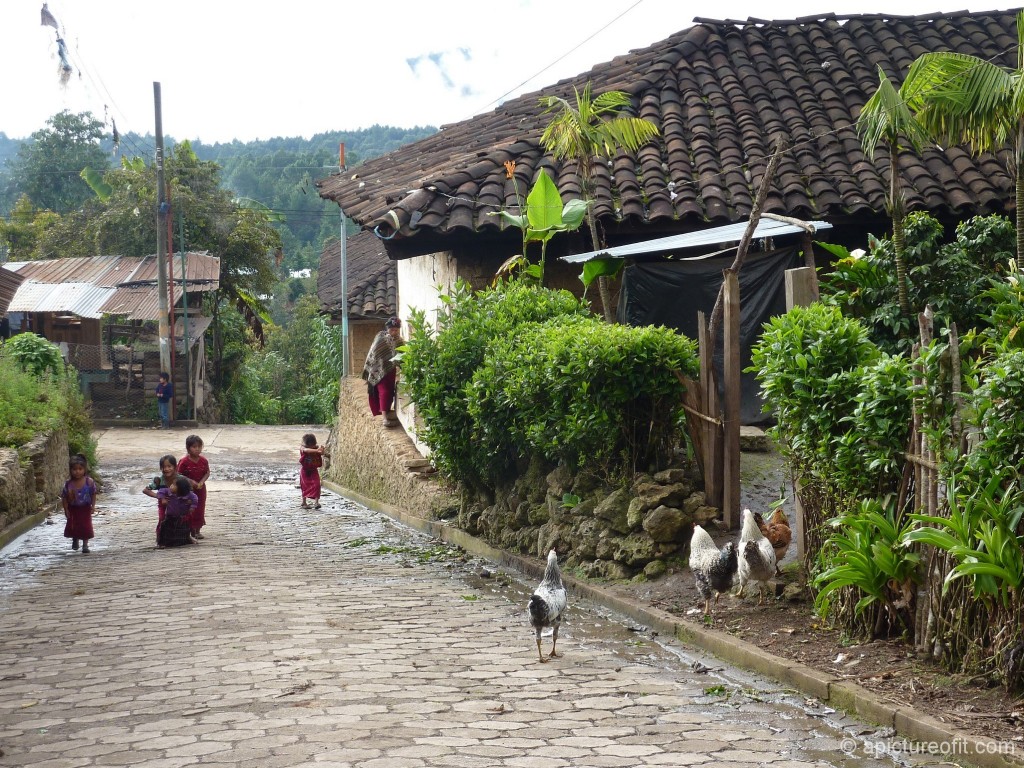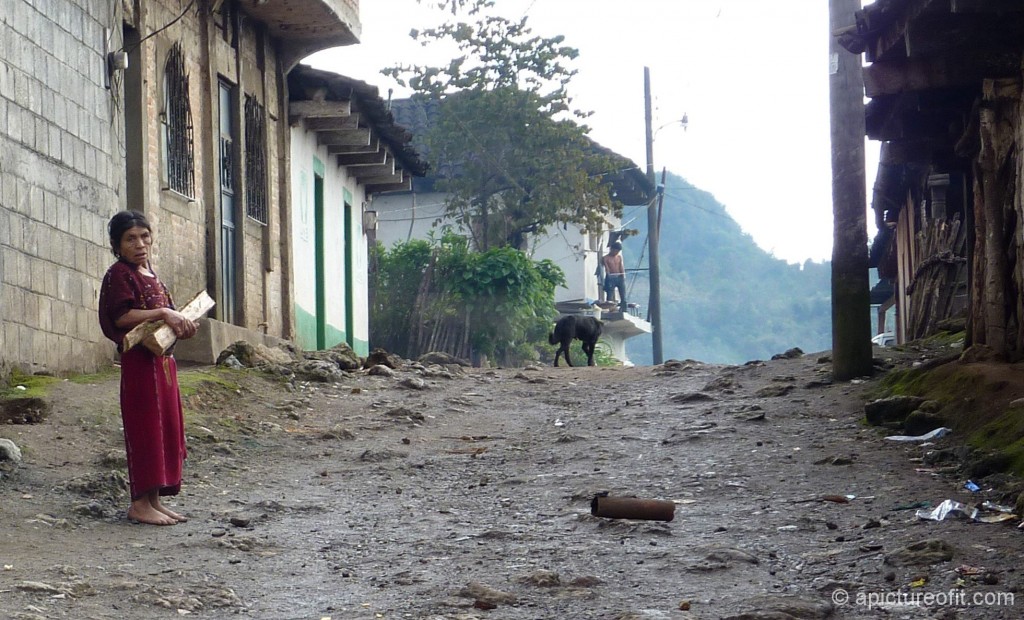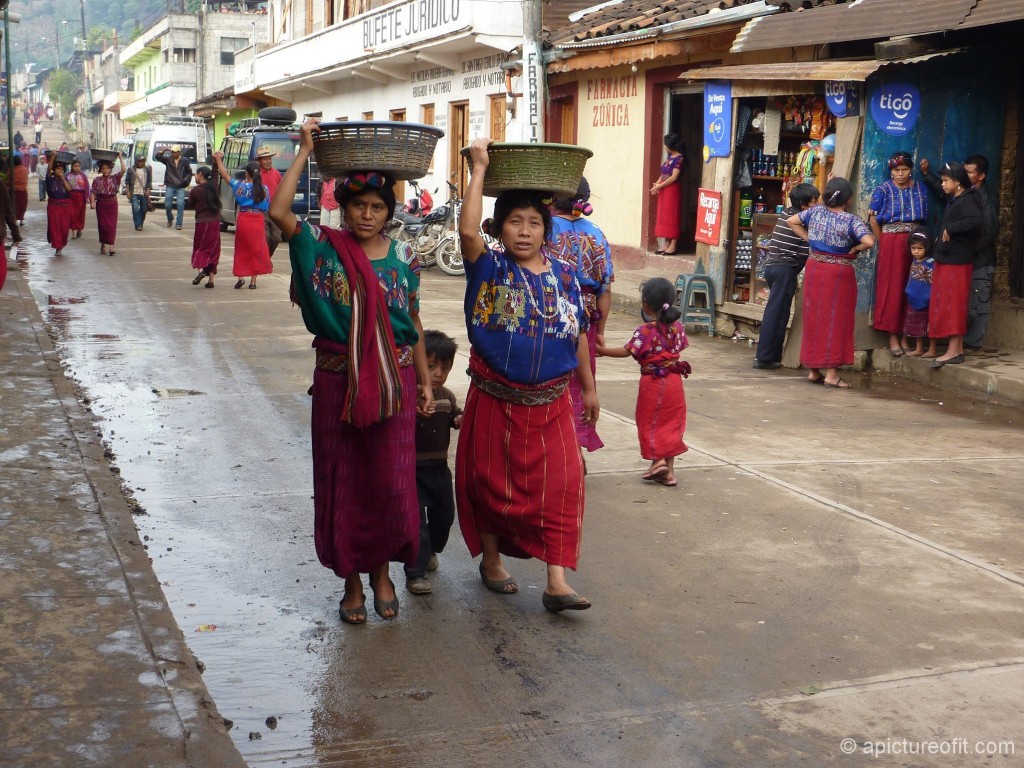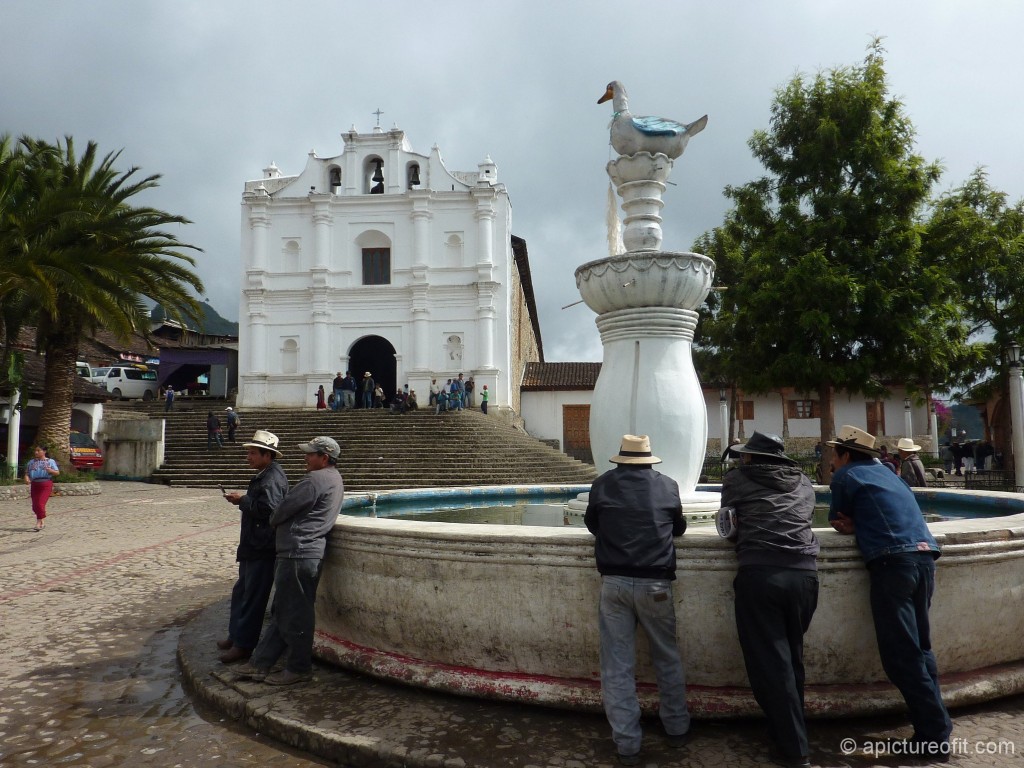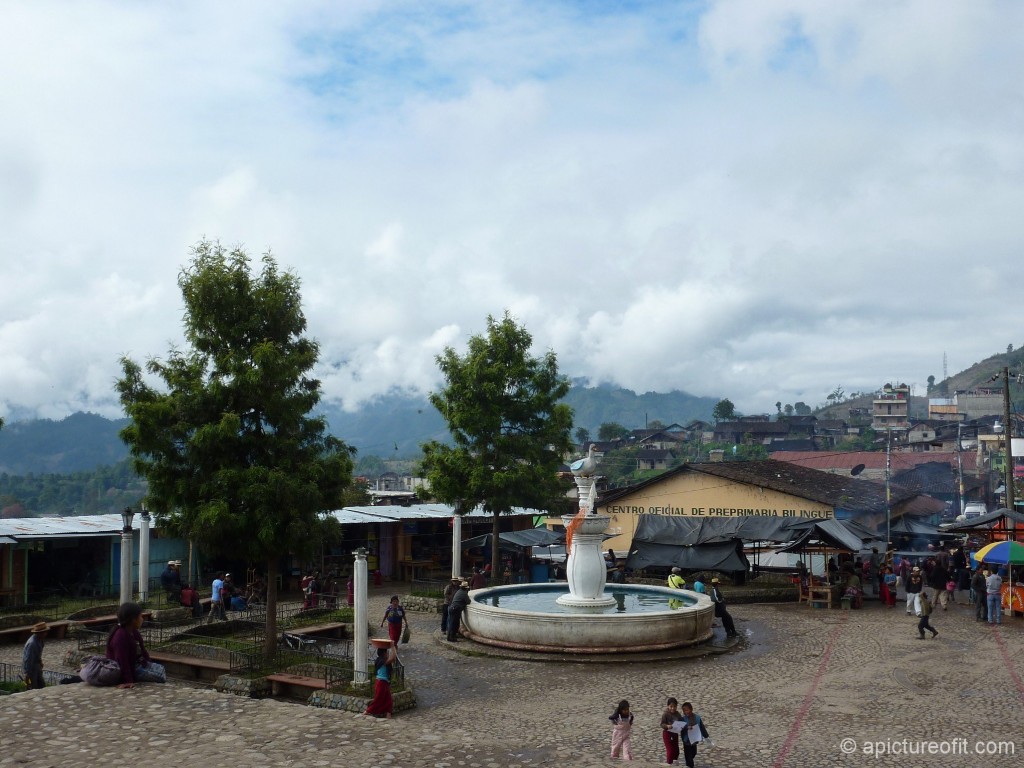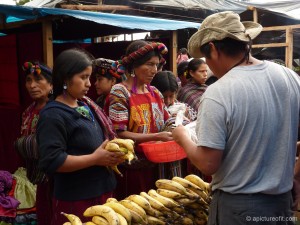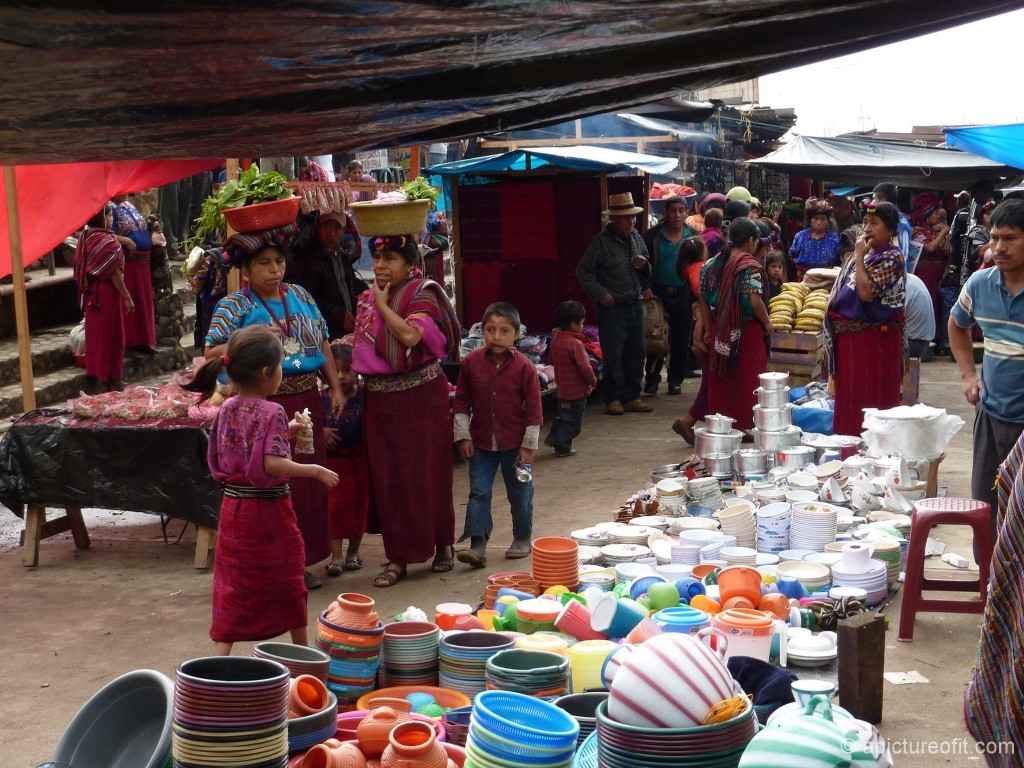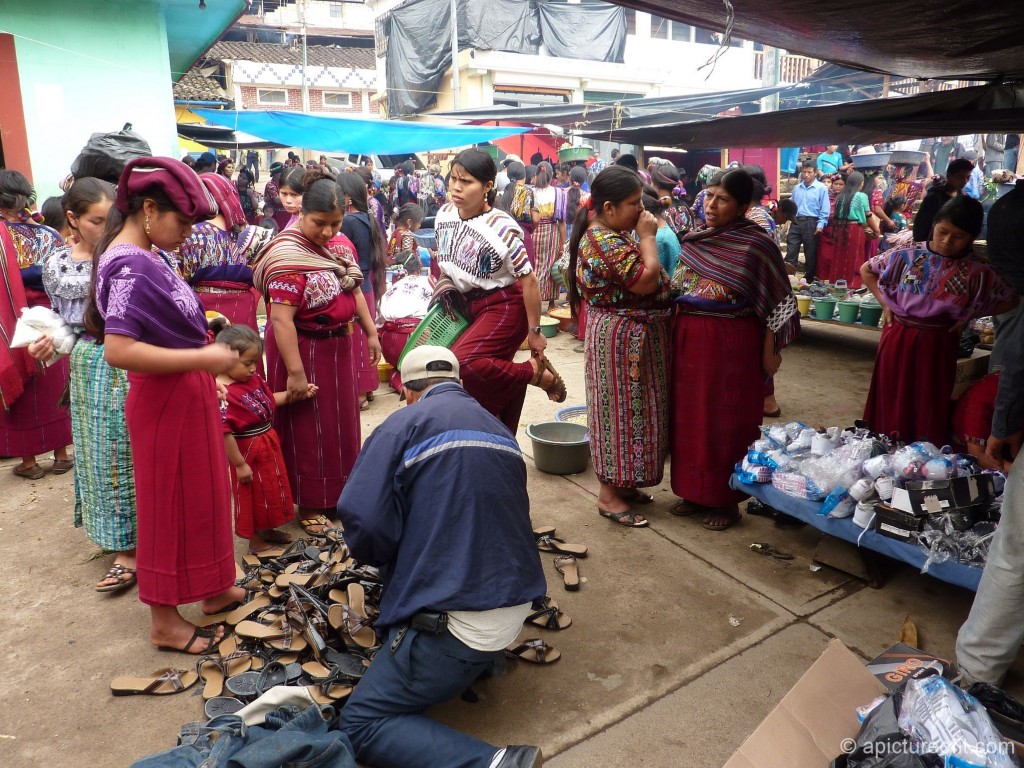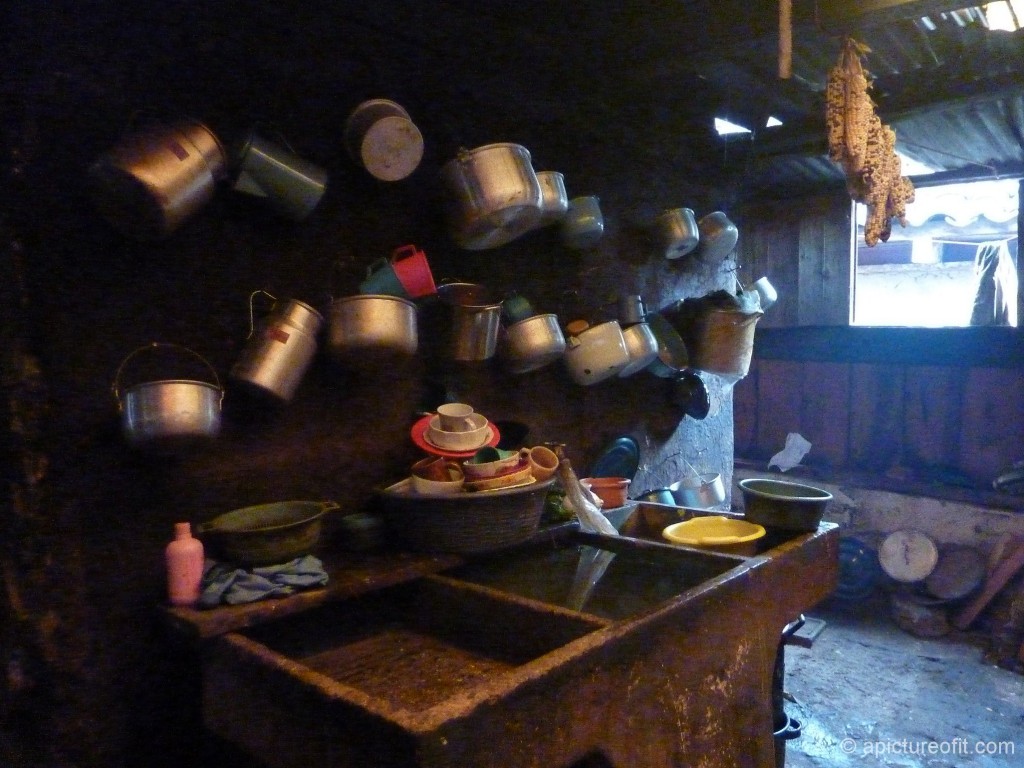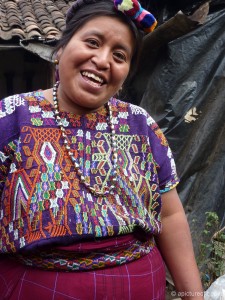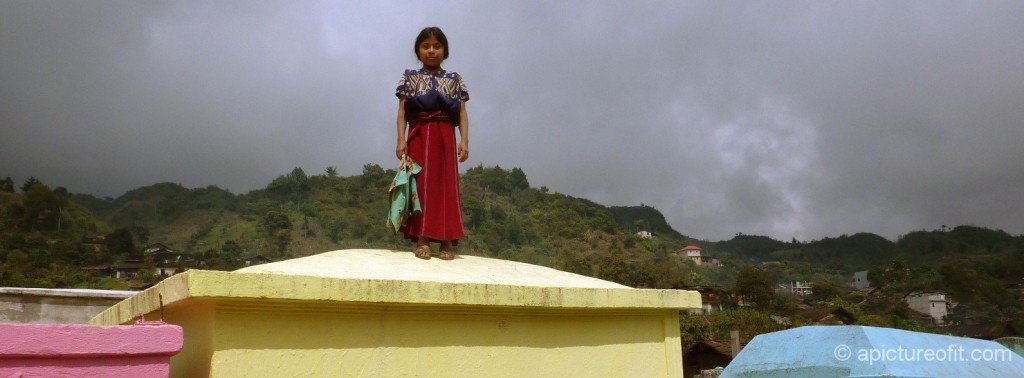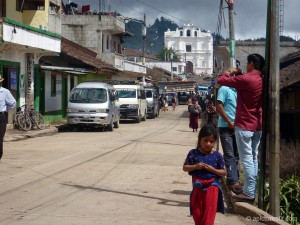
The main road into Chajul leads directly to the Plaza and La Iglesia Católica de Chajul. The last bit of road is closed to vehicles on market days.
In many rural areas, the local market days rotate among a few of the more prominent villages in the region. In the Ixil Triangle region of Guatemala, Nebaj is the largest population center, with about 20,000 inhabitants. Chajul and Cotzal each have about half that population.
I had arrived in Santa Maria Nebaj just in time for the Thursday morning market. Now it is Friday and the activity has passed on to Chajul. Tomorrow it will move onward to San Juan Cotzal.
There are several advantages to visiting a village on one of its bi-weekly market days. First, transport to and from the village will be especially frequent on these days. Second, a great many people will be around. The rural inhabitants will come into the village, both to sell their produce and other wares, and to spend their proceeds. Third, the high level of activity is interesting to a visitor wanting to observe and, at the same time, the visitor is somewhat less noticeable.
To see the market at its most active, it is best to get an early start. I was tucked into a microbus and underway at 7:45 am, and in Chajul by 8:30. I first did a little wander in the village, walking away from the central area to get a feel for the appearance of the streets and the homes.
Most of the local people seemed much better off than this woman. Her husband was just behind her, carrying load of wood supported by a head strap. He was straining hard under his load. She carried a few sticks as well. Her bare feet spoke all too eloquently of their poverty.
I then walked back toward the busy market, along with groups of locals headed in also, and found a quiet little spot from which to quietly observe.
Because of the hilliness of the site, the town plaza is elevated. The street which led into town ended at the main stairway leading up to the plaza. To the left were shops. At the far side of the Plaza was a stairway which climbed up to La Iglesia Católica de Chajul. To the right a few more stairs led down to more shops.
The street paralleling the front of the plaza was filled with tables and stalls, and with tarps and blankets heaped with various goods.
Shoes often come in piles of sizes and styles. Matched pairs are more expensive.
Most interesting, and unusual, were the rural women who stood in a double line along the street leading to the plaza with their baskets of maize on the ground in front of them. A few also had baskets of black beans or avocados.
An hour or so later, the regimented line had relaxed. The sellers who were known to provide the best quality had already sold all they had brought. Buyers who arrived later would still have much to choose from but it would probably be of lesser quaiity.
Several of the women approached me to see whether I might come with them to their home to browse through some of their weavings. Eventually, when I had satisfied myself that I had seen what I had come for in the general market, I did agree to do that.
Certainly I did not really need, or even want, anything. But those small purchases can mean a great deal to the woman you buy from. And so I bought a couple of inexpensive used items – a little girl’s huipil (woven top) and a faja (sash).
And later that day I did purchase another huipil.
The textiles in Guatemala are so varied and beautiful, eventually it is hard to resist buying things you know you really don’t need.
And so passed the first part of my day in Chajul. From there I went on to explore much more of the village, wandering up the hills, and down, eventually discovering the very unusual Cementario (cemetery), and interacting throughout with the uninhibited and delightful children of the village.
— Continue reading to see more of Chajul —

